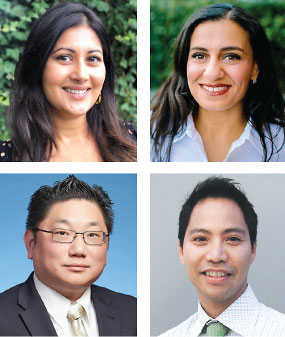Reinventing Networking During Era of Social Distancing
Abstract
As we become accustomed to living in a virtual world, we can make the most of it by keeping in mind certain points.

Professional networking in medicine is important for refining career goals, building strategic long-term relationships, and gaining a larger perspective on the health care industry. In our continually evolving health care system, networking is a crucial tool for psychiatrists in developing their professional identity and advancing within the field. Networking has traditionally relied on face-to-face meetings and conferences. However, social distancing measures to prevent the spread of COVID-19 have put a pause on these conventional networking methods. Although social gatherings and professional meetings may slowly resume over the coming months, there will likely be limits on meeting sizes, and physicians may be reluctant to attend large gatherings. While certainly not new, online methods of networking have traditionally been considered unconventional. However, these approaches to networking and socialization, in the context of social distancing, warrant exploration and consideration.
There are several venues for virtual networking, each with its own pros and cons.
Virtual Conferences
Academic organizations, including APA, are now offering virtual meetings and educational opportunities. Lectures are live or prerecorded. Pros are decreased travel time with prerecorded offerings and improvement in balancing work and personal commitments. Cons are limited ability to make new contacts, decreased engagement with colleagues, and loss of new travel opportunities.
Video Meetings
Pros of platforms such as Zoom or Doximity include a relatively easy user interface, availability of free software, and ease of meeting people from different geographic areas. Cons include technical glitches, though those problems will likely be fixed in future versions. Large videoconference meetings lose the face-to-face feel as multiple windows crowd computer or smartphone screens. This may be mitigated by smaller breakout groups and scheduling large meetings by geographical regions.
Listservs
Listservs of specialty-specific societies provide a discussion forum for issues of mutual interest and information sharing with a geographically diverse group of professionals. Pros include access to everyone’s contact information and ease in disseminating information. The technology—email—is simple to use, appealing to those who prefer not to learn yet another new method of communication. Cons of list serves are the increased email burden and ease of disengagement.
Social Media
Social media platforms such as Linkedln, Facebook, and Twitter offer the advantages of various networking settings including joining closed online physician groups, following people, and interacting through live Twitter chats. Social media serve as a tool for mentoring trainees and colleagues, introducing articles to new readers, and providing a space for psychiatrists to advocate for health care issues through platforms such as blogs and Facebook groups such as Psychiatry Network. One of the primary benefits of social media is the ability to network with colleagues rapidly and across geographical barriers, quickly reaching a large number of people at once. Social media can also be used to promote one’s career by sharing or retweeting publications, announcing promotions or awards, and interacting with social media friends and colleagues who show support.
Here are some tips for networking in the virtual world. First, whether you are on social media or on a listserv, complete your profile. Make sure you have a photo of yourself that is not too stuffy (no white coats, please!). Identify yourself as a physician in your handle. Remember that this is a representation of your online professional presence. Next, make sure your posts represent who you are. Many psychiatrists feel uncomfortable posting their opinions, but an alternative is to simply post about psychiatry in the news. By doing so, you’ll establish yourself as an expert as well as promote awareness and advocacy for psychiatry. Lastly, reach out to others. On listservs feel free to email someone whose comments you enjoyed. On Facebook and other social media platforms, follow or send friend requests to people you know or are connected through a mutual colleague.
We are entering an unusual time in history in which social distancing is crucial for saving lives. With the COVID-19 pandemic, many are staying at home. We have adapted in response, and virtual networking will be more important than ever in keeping us connected as we go forward. We need to think outside of the box for the new normal of networking. ■



